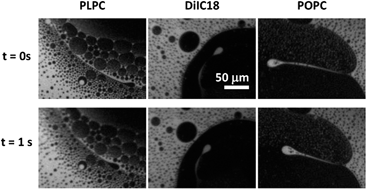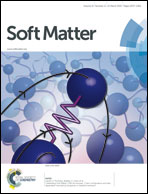Searching for line active molecules on biphasic lipid monolayers†
Abstract
In membranes with phase coexistence, line tension appears as an important parameter for the determination of the amount of domains, as well as their size and their shape, thus defining the membrane texture. Different molecules have been proposed as “linactants” (i.e. molecules that reduce the line tension, thereby modulating the membrane texture). In this work, we explore the efficiency of different molecules as linactants in monolayers with two coexisting phases of different thicknesses. We tested the linactant ability of a molecule with chains of different saturation degrees, another molecule with different chain lengths and a bulky molecule. In this way, we show in the same system the effect of molecules with chains of different rigidities, with an intrinsic thickness mismatch and with a bulky moiety, thereby analyzing different hypotheses of how a molecule may change the line tension in a monolayer system. Both lipids with different hydrocarbon chains did not act as linactants, while only one of the bulky molecules tested decreased the line tension in the monolayer studied. We conclude that there are no universal rules for the structure of a molecule that enable us to predict that it will behave as a linactant and thus, designing linactants appears to be a difficult task and a challenge for future studies. Furthermore, in regard to the membrane texture, there was no direct influence of the line tension in the distribution of domain sizes.


 Please wait while we load your content...
Please wait while we load your content...